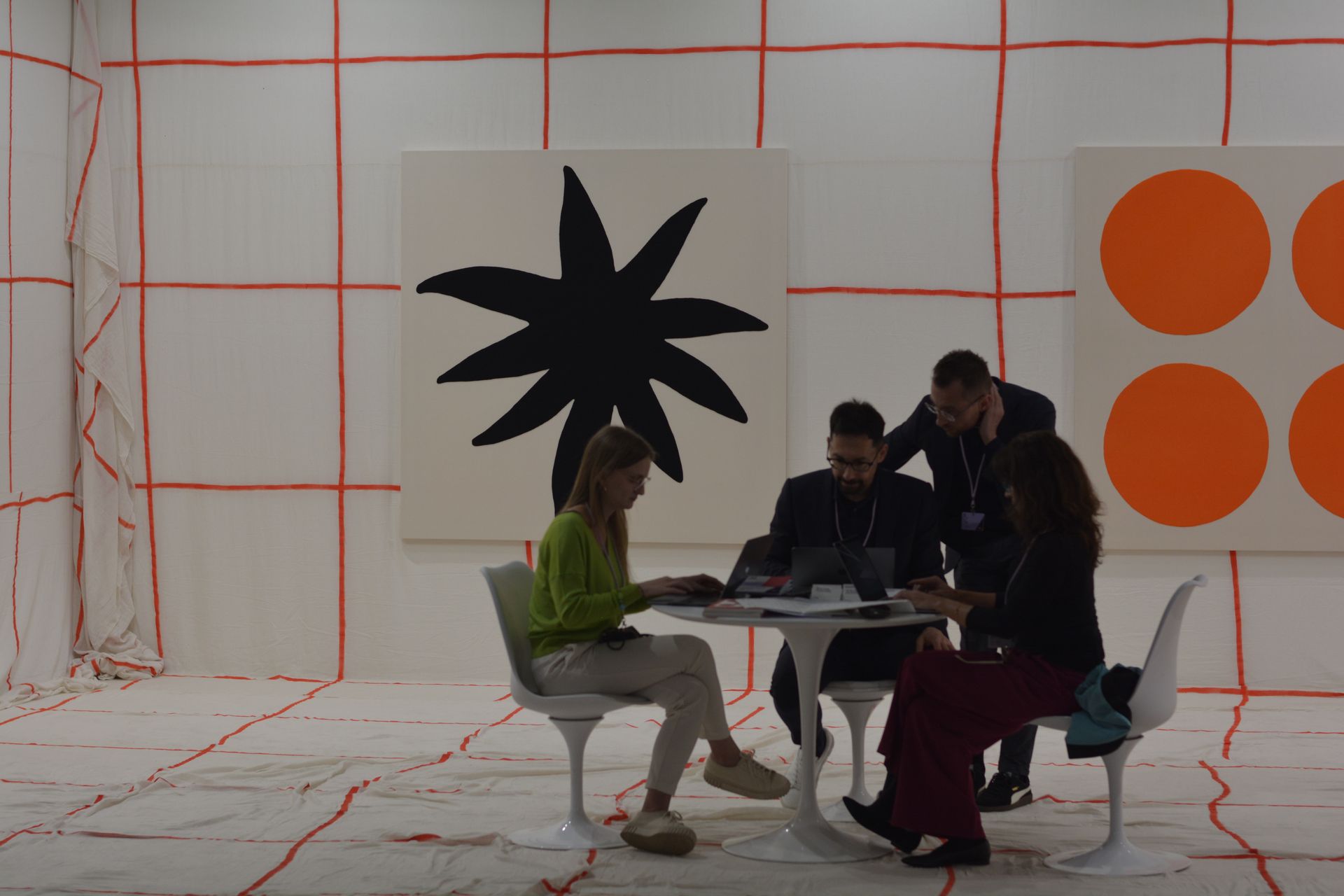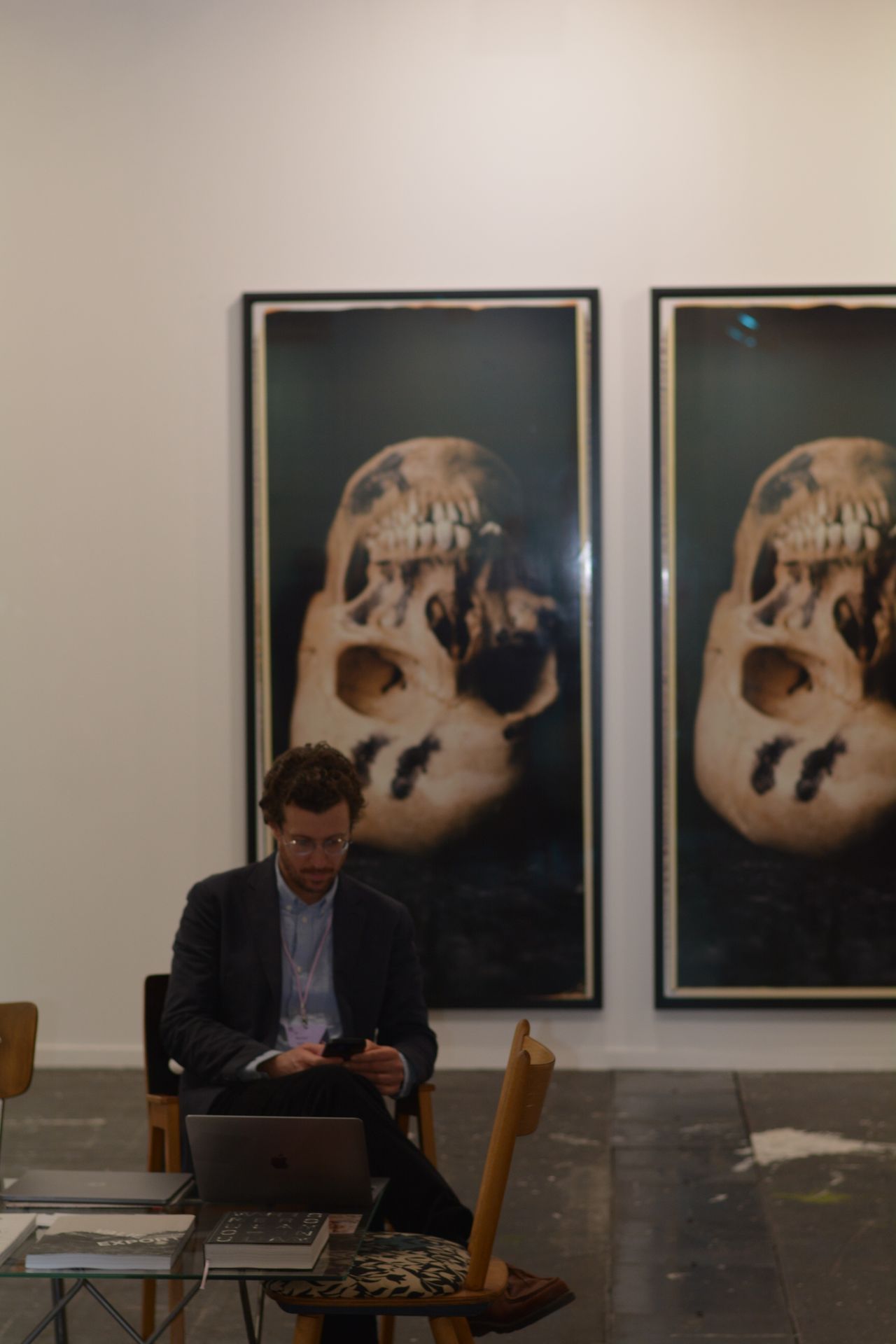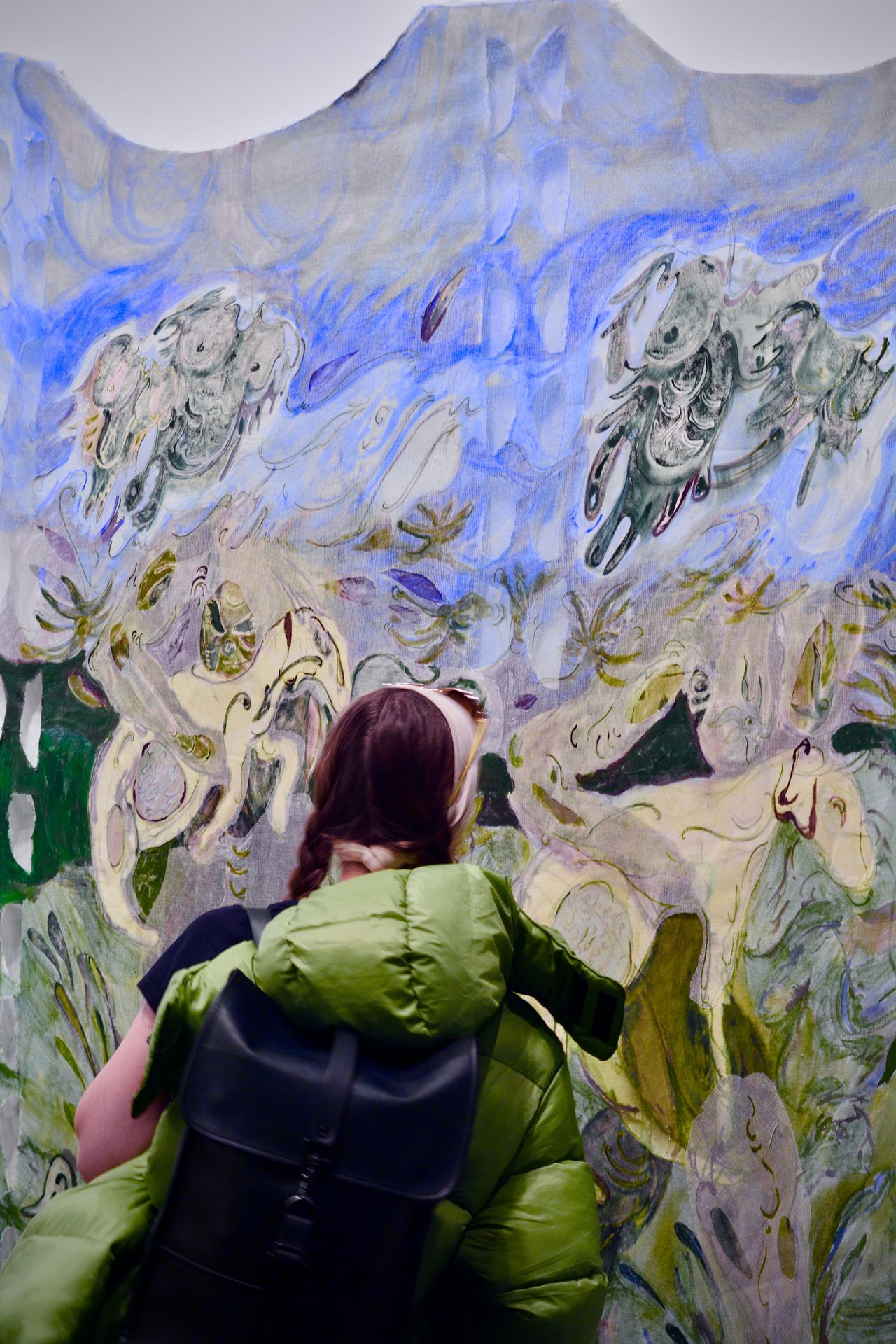Walking around the ARCO Feria de Arte, I felt extremely out of my league. I was at ARCO to enjoy the exhibits, but also to collect content for the Artera Magazine and blog. During my Uber ride there, I had been confident and talkative, conversing with my driver in broken but enthusiastic Spanish. Once I arrived, however, I was hit with a wave of social ineptitude–I had a camera hung around my neck, and several potential interview questions floating vaguely around my head–and I felt exceedingly out of place.
On all sides, I was surrounded by beautiful art and well-dressed people, all of whom seemed deeply involved in serious conversations with one another. I saw the smartly dressed sales representatives of each featured gallery, wearing suits and crisply ironed button downs. I saw people who might well be their potential clients, who walked with a stature that, in my mind, was indicative of serious wealth. I saw art collectors, students, artists seeking inspiration, families and couples enjoying the event together–and I didn’t know where to start.

So, naturally, I sought out the bar. Sitting in the food-court at the back of the pavilion, nursing a vermouth, I was able to calm my nerves. Outside among the art exhibits, the voices of the crowd had sounded almost synchronized, rising and falling in a low hum. Inside the food-court, however, it was loud; there was overlapping chatter and laughter, and for me, it was a massive relief. I finished my drink, and left the food-court with new confidence.
Though the art surrounding me on all sides was breathtaking, half the time I found myself watching the people instead of the exhibits. The crowd was alive with diverse clothing colors and styles and I heard at least six different languages being spoken as I walked. It seemed to me that ARCO truly drew in people from all over.
Turning around too quickly with my eyes still glued to a painting, I bumped into a man who was walking the other direction. We exchanged a mutual apology, but before he turned away I found myself asking him loudly if he didn’t mind answering a few questions for an article I was writing. Despite the fact that I was red in the face and exuding anxious energy, he was kind enough to agree.
He introduced himself as José, and when I asked him about his experience at ARCO, he told me he was at the festival for the experience of “sharing it with my family, with my mother in particular. She’s somewhere around here,” he said, looking around.
“My appreciation for art, especially modern art, is something that came to me later in life, I will say,” José continued. “It's, uh, not something that I explored too much as a young man, growing up back home in Guatemala, but now (my mother) and I can connect over experiencing art. She’s very artistically inclined,” he told me. “She does a bit of everything.”
“Art is always about the people and the story around it,” he says. “For me, uh, the audience that matters is the people I’m with, usually. In this case, my mother.”


For some people, the ARCO experience was quite different.
“As young artists, we have to find our way across the art world, and looking at all these galleries, we can, like, find a way to represent ourselves,” says Camila, who I met outside of the ARCO entrance after asking her to borrow a lighter. Camila told me that the ARCO event provided both “Inspiration, and also, like, what our future could look like”.
“I personally go through two different types of processes,” her friend Inés adds. “What I’m feeling at the moment and what I, like, put into my artwork that’s more personal, and what I think could be more accepted and what could sell more”.
“There’s always been an element of the commercial (in art),” says Ross Tomas, the smartly-dressed sales director for the Timothy Taylor gallery. “Whether it’s, uh, patronage of artists in their work by the wealthy…there’s always a value ascribed to art.”
I asked him, “What other types of value can you see in art?”
“Social impact,” he says. “Public art is obviously the best vehicle for that…public interventions in a public space.”
“There is a limit to how people can interact with art, whether it's in the museum setting or commercial gallery or whatever,” he continues. “An intervention in a public space allows someone a sort of more transient connection with it.
“They can…take meaning from it in their own way, there’s no pressure, there’s no barrier. It’s about removing barriers to art…There is an exclusivity to art,” he says, “that is a boundary that you can find hard to get across…It’s a roundabout way of saying that I think there is an important social impact that art can have, but in order to have that impact it has to be accessible. I think public art has that accessibility.”
I looked at my surroundings, and wondered if Tomas would consider ARCO to be accessible in the way he described. Finally, I made my way back to the food-court, where an overpriced vermouth was calling my name.